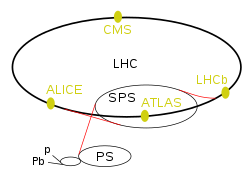Search results
Appearance
There is a page named "Solenoid (mathematics)" on Wikipedia
- of topological groups. For the wrapped loop of wire, see Solenoid. In mathematics, a solenoid is a compact connected topological space (i.e. a continuum)...10 KB (1,488 words) - 22:12, 5 February 2025
- Solenoid is a 2015 novel by Mircea Cărtărescu written in the 2010s and, according to Cărtărescu, in a single draft without revision. The English translation...12 KB (1,324 words) - 17:58, 29 June 2025
- field in mathematics characterized as having zero divergence Solenoid (DNA) in genetics Solenoid (mathematics) Solenoid (meteorology) Solenoid (novel)...664 bytes (113 words) - 18:37, 4 October 2023
- Dyadic solenoid)[{\tfrac {1}{2}}]} . In advanced mathematics, the dyadic rational numbers are central to the constructions of the dyadic solenoid, Minkowski's question-mark...35 KB (3,895 words) - 15:39, 26 March 2025
- List of general topology topics (category Mathematics-related lists)topology Zariski topology Kuratowski closure axioms Unicoherent Solenoid (mathematics) Uniform continuity Lipschitz continuity Uniform isomorphism Uniform...5 KB (401 words) - 16:43, 1 April 2025
- Electromagnet (section Simple solenoid)of turns in the solenoid, I is the current through the solenoid wire, and ℓ is the length of the solenoid. For long, slender, solenoids (in units using...50 KB (5,572 words) - 02:45, 22 April 2025
- Right-hand rule (category Vectors (mathematics and physics))pole in a Solenoid. An electric current passes through a solenoid, resulting in a magnetic field. When wrapping the right hand around the solenoid with the...18 KB (2,359 words) - 23:55, 17 June 2025
- 6°4′37″E / 46.30944°N 6.07694°E / 46.30944; 6.07694 The Compact Muon Solenoid (CMS) experiment is one of two large general-purpose particle physics detectors...35 KB (4,584 words) - 11:35, 24 June 2025
- In mathematics, for a function f : X → Y {\displaystyle f:X\to Y} , the image of an input value x {\displaystyle x} is the single output value produced...19 KB (2,437 words) - 00:00, 28 May 2025
- In mathematics, G2 is three simple Lie groups (a complex form, a compact real form and a split real form), their Lie algebras g 2 , {\displaystyle {\mathfrak...15 KB (2,056 words) - 18:40, 24 July 2024
- In mathematics, F4 is a Lie group and also its Lie algebra f4. It is one of the five exceptional simple Lie groups. F4 has rank 4 and dimension 52. The...8 KB (1,007 words) - 10:38, 3 July 2025
- discrete torsion-free abelian group. Some examples of protori are given by solenoid groups. Duocylinder - Cartesian product of two disks Proprism Hofmann,...962 bytes (94 words) - 21:10, 13 September 2019
- In mathematics, E6 is the name of some closely related Lie groups, linear algebraic groups or their Lie algebras e 6 {\displaystyle {\mathfrak {e}}_{6}}...28 KB (3,820 words) - 07:23, 3 May 2025
- P-adic solenoid)namely the product topology with cylinder sets as the open sets. The p-adic solenoid is the inverse limit of the topological groups R / p n Z {\displaystyle...15 KB (2,275 words) - 23:53, 30 April 2025electrodynamics. He is also the inventor of numerous applications, such as the solenoid (a term coined by him) and the electrical telegraph. As an autodidact,...21 KB (2,280 words) - 04:49, 24 June 2025Magnetic field (section Mathematics)Bending a wire into multiple closely spaced loops to form a coil or "solenoid" enhances this effect. A device so formed around an iron core may act as...105 KB (12,969 words) - 07:57, 9 June 2025
- by James Clerk Maxwell Magnetic Solenoids and Shells 90552A Treatise on Electricity and Magnetism — Magnetic Solenoids and ShellsJames Clerk Maxwell
- governments, but Nature. Tejinder (Jim) Virdee, a spokesman for the Compact Muon Solenoid contained within the Large Hadron Collider New York Times coverage of the
- models are the one-start solenoid, the two-start helix zigzag, the cross-linker, and the supranucleosome model. 1) The solenoid model = Deals with the coiling
)







